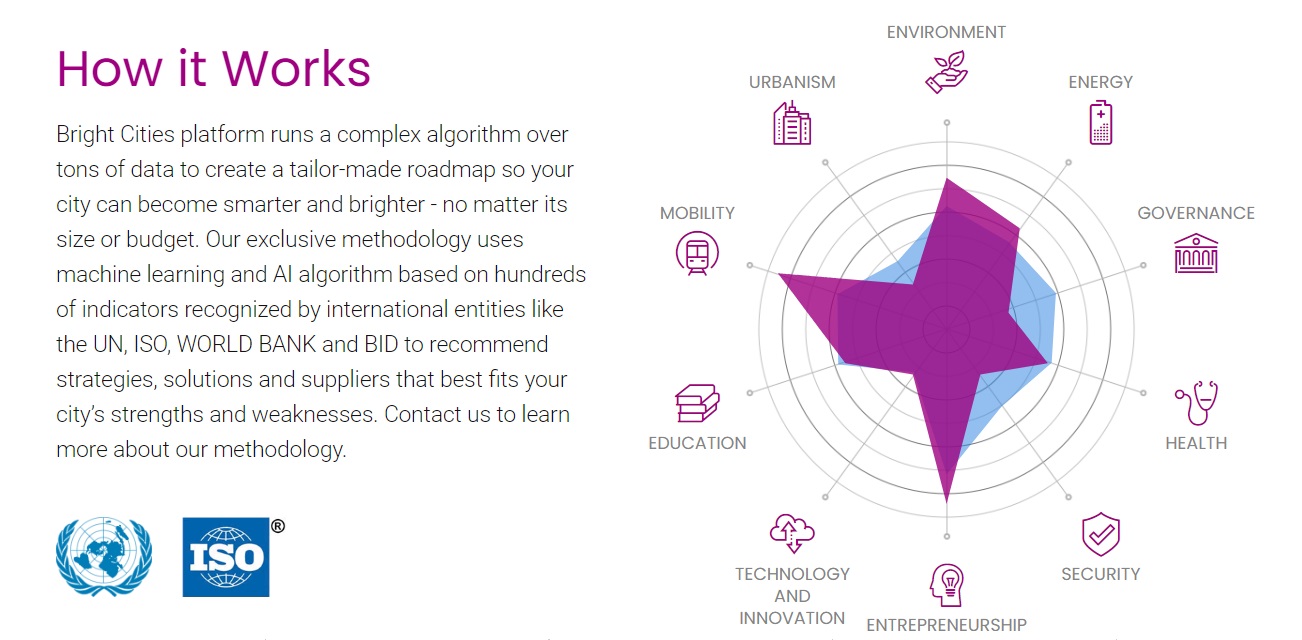All of these characteristics are indispensable for a Smart City. But, after all, what is behind each one of them?

There are those who think that a Smart City is a subject for science fiction. Who has not related the concept to flying cars, drone deliveries, or even artificial intelligence? Despite all of this being an issue, who knows, for the near future, we must keep in mind that smart cities are already a reality and carry a meaning that goes far beyond technological innovation.
In a Smart City, it the citizen, not technology, who occupies the center of the debate. The main objective? Ensure quality of life! And this is done with the development of innovative and integrated urban projects, based on the use of technology and smart solutions to face urban challenges and guarantee better public services for the population.
From mobile apps, such as the ones we use every day to facilitate our routine, to complex big data networks and sensors, there are many initiatives capable of making public management more connected, resilient and sustainable. But, after all, what does each of these concepts mean?
Connected cities
First, we need to make one thing clear: a smart city is resilient, sustainable and connected, but we cannot make the opposite statement. For example, just because a city is connected does not mean that it is already smart! Proof of this is that many municipalities out there have internet, but there is no point in providing this service if it is not reversed in positive actions for the population!
A truly connected city is one that establishes a direct, secure and efficient communication network between its Municipal Secretariats and its own citizens, to respond quickly to their challenges and demands. We are talking about platforms for dialogue and engagement of people, data netwoks and sensors, all of them capable of gathering in real time the most diverse information and data about urban life.
A good example of a connected initiative can be found in São Paulo, which adopted the intelligent solution Bueiro Inteligente. Using sensors installed in the culverts of roads, the technology allows preventive and quick action to clean the ditches before the rains, avoiding overflows. The signal emitted by the sensor indicates when the manhole reaches 70% of its capacity, and promises to reduce operational cleaning costs for the city by up to 51%. In addition, manholes have a biological larvicide approved by Anvisa, which substantially reduces the proliferation of Aedes Aegypti.
It is worth mentioning, however, that the success of this and other solutions goes far beyond the mere installation of sensors: what a city needs to learn is precisely what to do with the data it collects. In other words, as much as it is connected, a city will only become intelligent when it knows how to use this information to make better decisions, anticipate problems and solve them proactively, always in a coordinated action with other areas of its management.

Resilient cities
It is true that our cities are constantly changing, and there is no better example of this than what has happened in recent months with the advancement of the coronavirus. The largest cities in the world have seen their streets deserted, their shops have been closed and public transportation has been abandoned. In order to return to a certain type of “normality”, they had to transform themselves: they imposed new rules of socialization, started to do mass testing as well as started to track the outbreaks of the disease.
That is, they adapted. A resilient city is precisely one that manages to prepare for changes, that knows how to foresee problems and that deals with adverse situations without leaving its population in a vulnerable situation.
An example of a resilient city is Singapore, not by chance listed as one of the ten most intelligent in the world. Just as the pandemic began to grow there, the city-state created a sophisticated and extensive tracking program to map the chain of transmission of the virus and isolate potential patients who could acquire the disease.
Campinas, considered the most intelligent and connected city in the country by the Connected Smart Cities 2019 Ranking, has also managed to adapt to the new demands of the pandemic without having to harm its education network. To do so, it distributed 4G internet chips to be connected on cell phones and tablets by more than 21 thousand students from the municipal network, a policy that guaranteed students the opportunity to follow classes in online tools such as Google Classroom.
In other words, through systems of monitoring and application of technological solutions, both cities were able to (1) identify adversity and people at risk / vulnerability, (2) adopt strategies to solve problems, (3) respond quickly and efficiently to the challenge and (4) guarantee the services that its population needed so much!

Sustainable Cities
In times when the environmental agenda gains more relevance and urgency, we cannot talk about quality of life and Smart Cities without talking about sustainability. As ISO, the International Organization for Standardization, says, a smart city “increases the speed at which it delivers results of social, economic and environmental sustainability and responds to challenges such as climate change, rapid population growth and political and economic instability“.
In other words, sustainability goes beyond the environment and encompasses social and economic issues in an integrated way! Thus, when we say that a municipality is sustainable, we mean that its economic, social, cultural and, of course, environmental aspects are used in a balanced way, without affecting resources for future generations.
And for that to happen, these municipalities invest in infrastructure and technologies that use clean energy, whether in public lighting, transportation and monitoring systems; develop integrated and sustainable urban projects, which value low-carbon construction, active mobility and housing with adequate sewage and sanitation services; encourage research and green solutions; support socially and environmentally engaged companies; among many other policies.
In a sustainable city, consumption and production is about doing more and better with less. For this reason, its urban policies seek to decouple economic growth from environmental degradation, increasing the efficiency of public services and promoting sustainable lifestyles. With policies like this, everyone wins. It is not by chance that smart cities take the lead when it comes to achieving goals such as SDG 11 – Sustainable Cities and Communities and SDG 12 – Responsible consumption and production!
Smart Cities
It is not difficult to see why connectivity, resilience and sustainability are indispensable for building a Smart City: all of these concepts, each in its own way, improve urban management by ensuring more accurate, fast, integrated and positive services for those who lives in urban centers.
Creating and implementing innovative and integrated projects through technology is a powerful tool to face contemporary problems. It is also the best alternative to guarantee the quality of life and the development that all cities, all over the planet, need. The challenge is big, but the good thing is that there are many solutions and initiatives, often free of charge, aimed at improving any area of performance of public management, whether in health, education, security, mobility, energy, urbanism or even governance.

If you want to discover how your city can be part of this transformation, download the free Bright Cities e-book and discover what it takes to make smart cities a reality (in portuguese only)!
We are a disruptive platform that wants to demystify the concept of Smart Cities and prove that any place in the world can become more connected, resilient and sustainable every day! Our technology develops comprehensive diagnostics for cities and suggest the best technologies available on the market to make public management more efficient. Discover our platform and upgrade your city!


